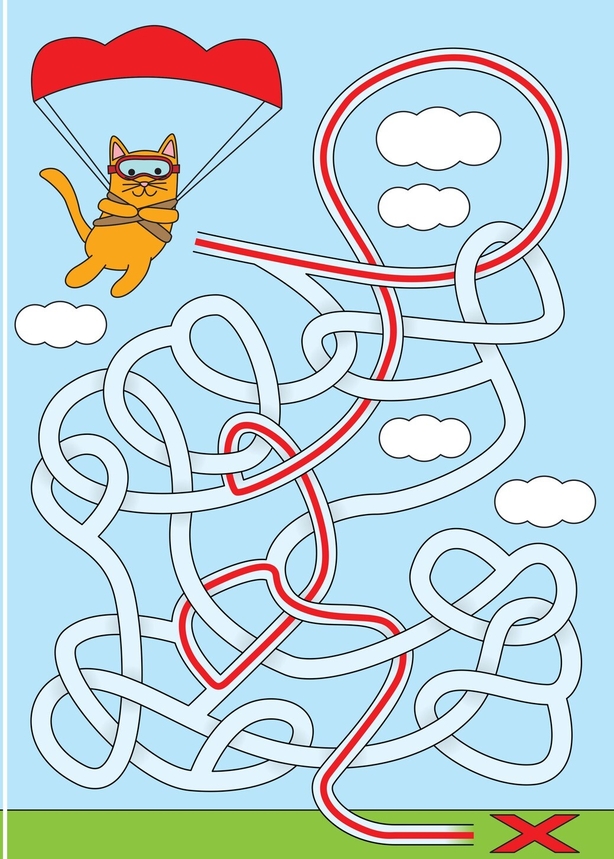What a Drag!

In Múinteoir Ray's science lesson today we learned about how parachutes work. Do you remember how? It’s all to do with air resistance, which is also known as drag.
When you drop an object, it falls to the ground, this is because the Earth pulls everything towards it with a force called gravity. Drag slows things down as they fall through the air. If you drop a stone and a feather the stone will hit the ground first, not because it weighs more but because the feather catches the air as it falls. It is drag that slows the feather down.
A parachutes job is to cause as much drag as possible by trapping air under it and slowing the fall of the person or object attached to the chute.

Let's Dive in and Make some Parachutes

Materials
- For the Parachute - Pick a selection of materials from around your home to make 4 parachutes with. For example - bin bags, shopping bags, bubble wrap, j cloth, napkin / serviette, tin foil, cotton, newspaper.
- Cargo (what the parachute will carry) – For example - Pegs or lego people. Whatever you use, the cargo should be identical for each parachute, so your recordings are accurate.
- Scissors
- String
- Tape
Method:
- Cut out squares in each of the materials you have chosen. Make sure they are all the same size.
- Cut four pieces of string that are the same length.
- Attach the string to each corner either by putting a hole through your material or use tape to stick it on.
- Tie the four pieces of string together in a knot
- Clip, tie or stick your cargo to the ends of the string.
- Now you are ready to test them out!
- Drop them one at a time from a height and try and count how many seconds it takes to reach the ground and note how the parachute dropped. It is useful to have a 2nd person to help with the experiment so one can drop it and one can time it.
- Drop each parachute from the same height.
- Note your results in the table at the bottom of this activity sheet. Let us know how you get on.
Here are Múinteoir Ray's parachutes. He used tin foil, bubble wrap, cotton, and a cloth.
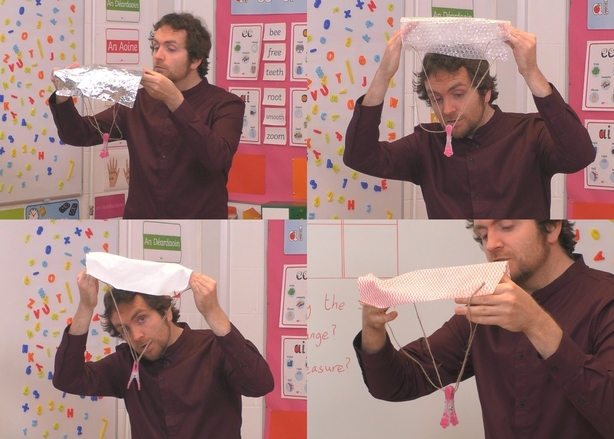
Now that you know which material makes the best parachute you can move on to figuring out what size parachute works best. Get experimenting!
And you could also try this...

Send us pictures or videos of what you have done. Ask your parents to help you send them to rte.ie/learn

An Eggciting Parachute Eggsperiment
Once you have perfected your parachute, how about testing it out with some extremely fragile cargo – an egg!
Find something to hold your egg in – for example – a yogurt carton, paper cup or some bubble wrap, and then work out how to securely attach it to your strings. Put your egg in then…drop!
Good luck little eggs!
Note: Ask an adults permission to use the eggs for the experiment.
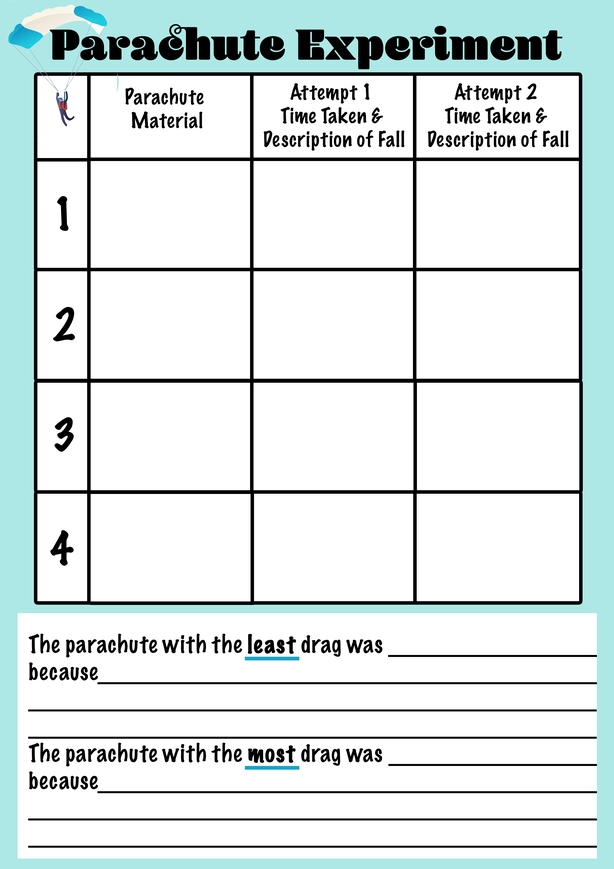
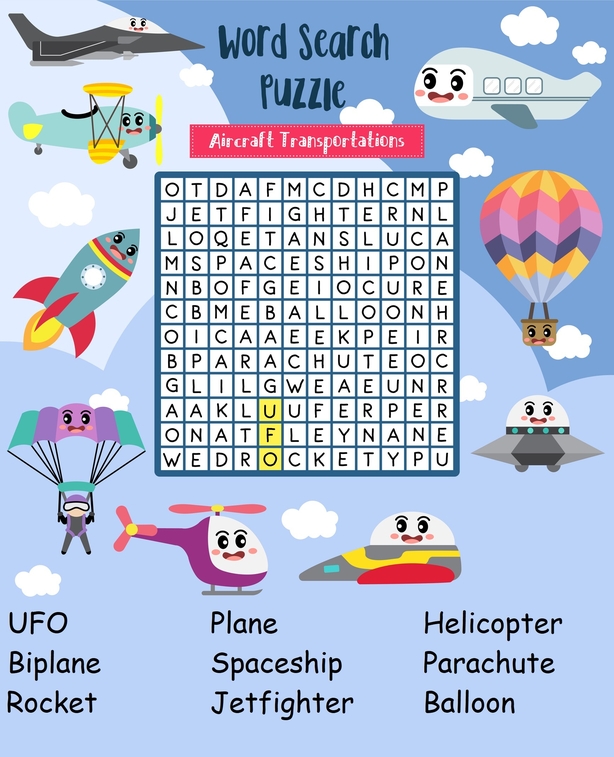
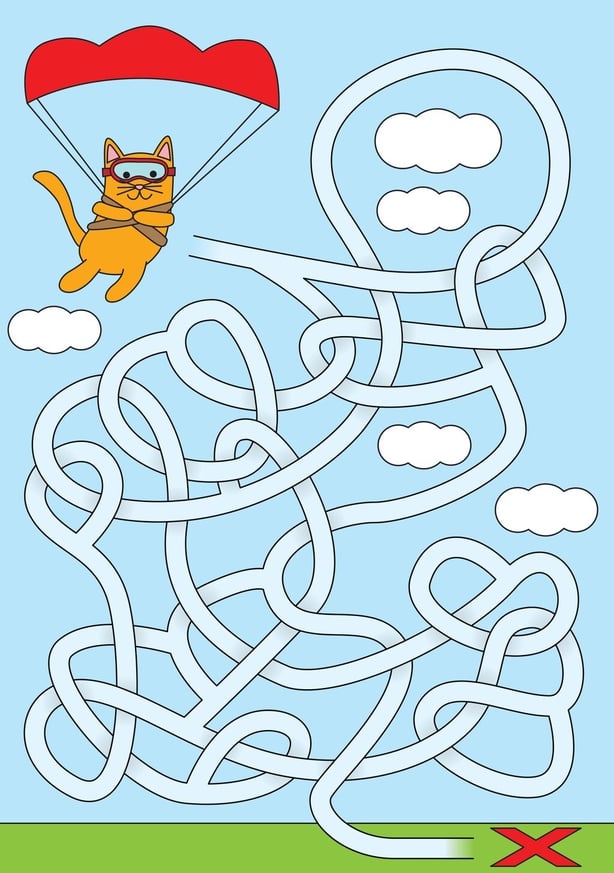

Send us pictures or videos of what you have done. Ask your parents to help you send them to rte.ie/learn
Answers

